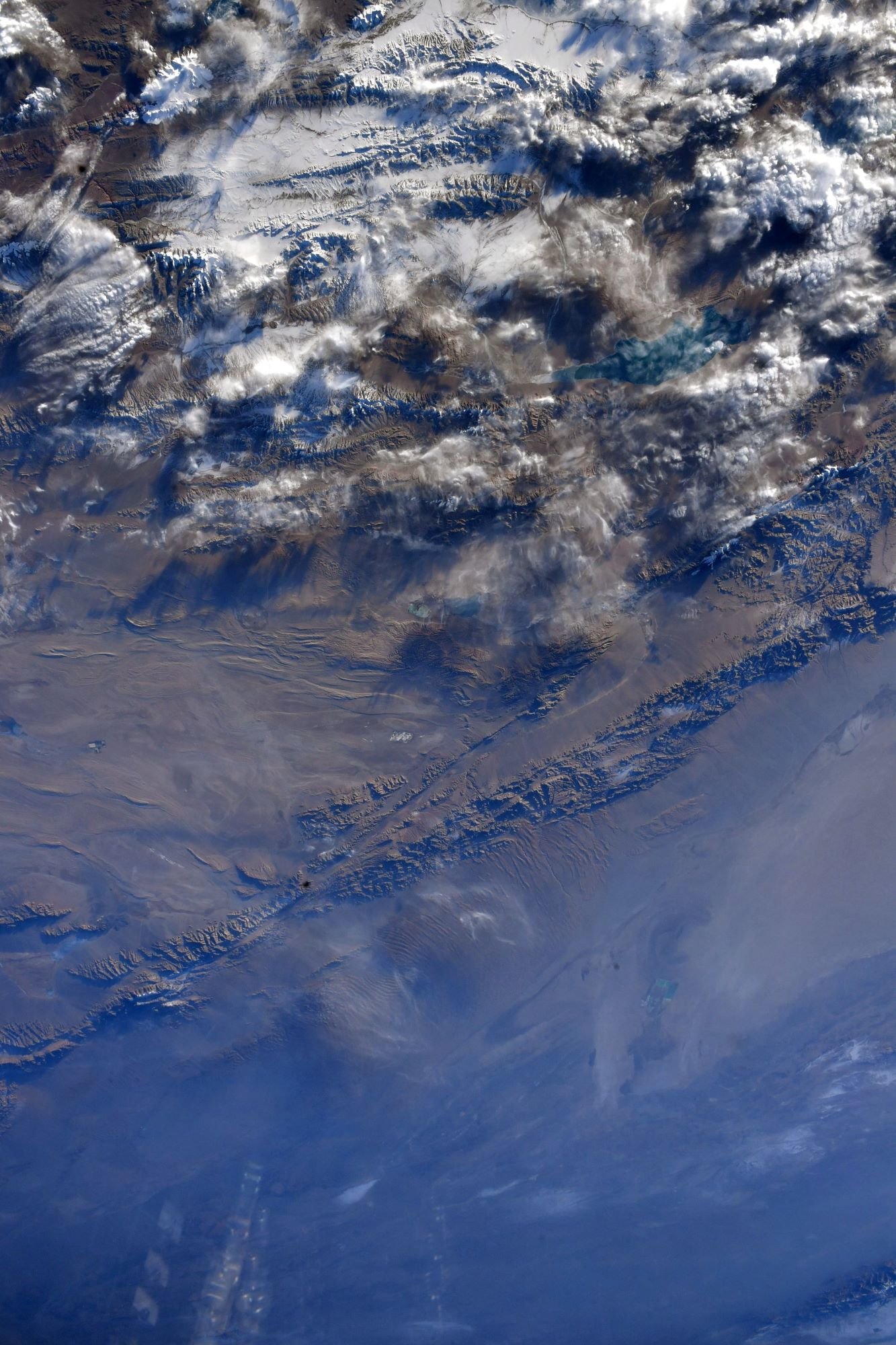[:ja]トーマス・マーシュバーン宇宙飛行士がISSから撮影したゴビ砂漠です。

ゴビ砂漠は、中国の内モンゴル自治区からモンゴルにかけて広がる砂漠で、東西約1600km、南北約970km、世界で6番目の大きさを誇ります。ゴビとはモンゴル語で「沙漠、乾燥した土地、礫が広がる草原」などを意味します。ゴビ砂漠は、雨雲がヒマラヤ山脈に遮られる為非常に乾いた風が吹き付けます。ゴビ砂漠は内陸にあるため大陸性気候であり、他の砂漠と比べ非常に高緯度であるにもかかわらず夏である5月〜9月までの間の最高気温は45度を超えることもあります。しかし冬である12月〜3月の間は、砂漠の年中灼熱といったイメージとはかけ離れた寒風吹きすさむ厳冬の地である。特に1月末から2月にかけては最低気温がマイナス40度を割り込むことも少なくありません。黄砂は、この地などから巻き上げられ気流に乗り運ばれる砂であり、春先には日本にも多く飛来すします。古くから匈奴を始め、柔然、突厥、回鶻、モンゴル帝国などの活躍の場であり、シルクロードの重要な拠点都市が幾つか存在しました。
地上の様子はこちらです。

参考文献: Thomas Marshburn’s Tweet
地球俯瞰画像を見る: LiVEARTH
[Earthview Wonders] No.1677: Gobi Desert🇲🇳🇨🇳
Astronaut Thomas Marshburn captured from ISS Gobi Desert.

The Gobi Desert is a large desert or brushland region in East Asia, and is the sixth largest desert in the world. The Gobi measures 1,600km from southwest to northeast and 800km from north to south. The Gobi is overall a cold desert, with frost and occasionally snow occurring on its dunes. Besides being quite far north, it is also located on a plateau roughly 910–1,520m above sea level, which contributes to its low temperatures. An average of about 194mm of rain falls annually in the Gobi. Additional moisture reaches parts of the Gobi in winter as snow is blown by the wind from the Siberian Steppes. These winds may cause the Gobi to reach −40°C in winter to 45°C in summer. However, the climate of the Gobi is one of great extremes, combined with rapid changes of temperature of as much as 35°C. These can occur not only seasonally but within 24 hours. (Credit: Thomas H. Marshburn, NASA)
The local scenery on the ground is as follows.

Reference: Thomas Marshburn’s Tweet
See earthview photo gallery: LiVEARTH[:]